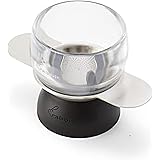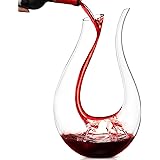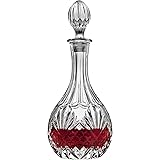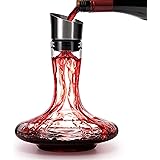While the tannin content cannot typically be discerned directly from a wine label, there are certain red wine varieties known for their higher tannin profiles. These include:
- Cabernet Sauvignon: A classic full-bodied red, celebrated for its firm tannins and ability to age.
- Nebbiolo: The grape behind Barolo and Barbaresco, known for its intense tannins, high acidity, and aromatic complexity.
- Syrah/Shiraz: Often features pronounced tannins, particularly in cooler climates, contributing to its savory and peppery notes.
- Malbec: While often fruit-forward, Malbec can also possess significant tannins, especially when aged in oak.
Experimentation is encouraged to discover which high-tannin red wines you enjoy most with various meals. It can be surprising how a wine that tastes quite challenging on its own transforms into a harmonious component of a meal when properly paired. This exploration is a fundamental aspect of appreciating the versatility of red wine and its role in culinary experiences.
Smart Storage: Freezing Leftover Red Wine for Cooking
It is not uncommon to have leftover red wine after opening a bottle, and rather than discarding it, there is an excellent method for preserving its utility. Freezing red wine is a practical and efficient way to ensure that no drop goes to waste, making it readily available for future culinary endeavors. This technique is particularly valuable for home cooks who appreciate adding depth and flavor to their dishes without needing to open a fresh bottle of red wine each time.
3. If there is red wine remaining in a bottle, it can be prepared for future use in cooking by freezing it. The process involves first boiling the wine to reduce its volume and concentrate its flavors. Once the reduced wine has cooled to room temperature, it is typically poured into ice cube trays for convenient portioning. This method ensures that small, pre-measured amounts of red wine are readily accessible for various recipes, from sauces and stews to marinades, preventing the need to open a new bottle just for a dash of flavor. Culinary experts often cite wine as a foundational ingredient for building complex flavor profiles in dishes.
The practice of freezing leftover wine is lauded for its convenience and ability to prevent waste. Reduced wine cubes can be added directly to hot pans for deglazing, used as a base for rich sauces like demi-glace, or incorporated into braising liquids for meats. A typical 750ml bottle of red wine, if not fully consumed, might otherwise result in a significant amount being discarded if not preserved, highlighting the economic benefit of this freezing method. Such methods are believed to reduce food waste, a growing concern for many households.
Benefits of Cooking with Red Wine
Cooking with red wine imparts a unique richness and complexity that cannot be easily replicated by other ingredients. Its acidity can brighten flavors, while its deep fruit and savory notes add layers to a dish.
- Enhanced Flavor: Red wine contributes umami and a depth of flavor to sauces, stews, and braises.
- Acidity Balance: The acidity in wine can cut through richness and balance fatty ingredients, preventing dishes from tasting heavy.
- Deglazing: Wine is excellent for deglazing pans, capturing the flavorful fond (caramelized bits) left after searing meats or vegetables.
- Marinades: It helps tenderize meats and infuse them with aromatic compounds.
Whether you are a seasoned chef or a beginner in the kitchen, having frozen red wine cubes on hand simplifies the process of elevating your cooking. This allows you to effortlessly infuse your meals with sophisticated flavors, ensuring that the last drops of your red wine are truly maximized in their utility.
The world of red wine can seem complex, but unlocking its full potential often comes down to a few simple, actionable strategies. As was highlighted in the informative video above, mastering just a handful of tips can significantly enhance your enjoyment of red wine, especially for those new to its nuances. These expert insights can help you transform common challenges into delightful experiences, ensuring every bottle is enjoyed to its fullest.
Reviving Your Red Wine: The Power of Oxygen
One common issue encountered with screw-top red wine is a flat or sulfurous aroma upon opening. This often indicates a lack of oxygen, which prevents the wine’s desirable aromas and flavors from fully developing. Fortunately, this can often be remedied with a simple technique that introduces air to the wine, helping it to “open up.”
1. If a screw-top red wine appears flat or exhibits a sulfurous smell, it is often lacking sufficient oxygen. To address this, a small amount of wine may be poured out to create headspace. The cap is then replaced, and the bottle is given a good shake. This process is understood to introduce oxygen into the wine, which can help to dissipate unwanted aromas and allow its true character to emerge. It has been observed that proper aeration can make a significant difference in the perceived quality of certain wines, transforming a dull sip into a more vibrant experience.
It is widely recognized that oxygen plays a crucial role in wine development. While extensive aeration can be detrimental, a controlled introduction of air is often beneficial for young or tightly structured red wines. Many sommeliers and wine enthusiasts utilize decanters for a similar purpose, allowing wines to breathe for 30 minutes to several hours, depending on their age and varietal. This process is generally believed to soften tannins, release trapped aromas, and improve the overall texture of the wine.
Understanding Red Wine Tannins and Food Pairings
Tannins are natural compounds found in red wine that contribute to its bitterness, astringency, and complexity. They originate primarily from grape skins, pips, stalks, and also from aging in wooden barrels, particularly oak. While tannins are a vital component of red wine’s structure and aging potential, high tannin levels can sometimes be perceived as harsh or drying on the palate, especially when a wine is consumed without food.
2. Wines that are high in tannins can be made significantly more approachable when they are paired with certain foods. It is often observed that high-protein dishes, such as red meat or aged cheeses, interact with tannins in a way that softens their perceived bitterness and astringency. This chemical interaction allows the wine’s fruit characteristics and other complexities to become more apparent, resulting in a smoother, more integrated tasting experience. For example, a robust Cabernet Sauvignon, which is known for its high tannin content, is frequently enjoyed alongside a grilled steak, where the fat and protein in the meat help to balance the wine’s structure.
The effect of tannins on the palate is often described as a drying sensation, which occurs because tannins bind with and precipitate proteins in saliva. When consumed with protein-rich foods, the tannins bind with the food proteins instead, reducing their interaction with salivary proteins. This is a key reason why many traditional food and wine pairings have evolved to include high-tannin red wines with dishes like beef, lamb, or hard cheeses. Studies have shown that specific proteins, such as those found in various dairy products, can effectively mitigate the sensation of astringency caused by wine tannins.
Identifying Tannins in Your Red Wine
While the tannin content cannot typically be discerned directly from a wine label, there are certain red wine varieties known for their higher tannin profiles. These include:
- Cabernet Sauvignon: A classic full-bodied red, celebrated for its firm tannins and ability to age.
- Nebbiolo: The grape behind Barolo and Barbaresco, known for its intense tannins, high acidity, and aromatic complexity.
- Syrah/Shiraz: Often features pronounced tannins, particularly in cooler climates, contributing to its savory and peppery notes.
- Malbec: While often fruit-forward, Malbec can also possess significant tannins, especially when aged in oak.
Experimentation is encouraged to discover which high-tannin red wines you enjoy most with various meals. It can be surprising how a wine that tastes quite challenging on its own transforms into a harmonious component of a meal when properly paired. This exploration is a fundamental aspect of appreciating the versatility of red wine and its role in culinary experiences.
Smart Storage: Freezing Leftover Red Wine for Cooking
It is not uncommon to have leftover red wine after opening a bottle, and rather than discarding it, there is an excellent method for preserving its utility. Freezing red wine is a practical and efficient way to ensure that no drop goes to waste, making it readily available for future culinary endeavors. This technique is particularly valuable for home cooks who appreciate adding depth and flavor to their dishes without needing to open a fresh bottle of red wine each time.
3. If there is red wine remaining in a bottle, it can be prepared for future use in cooking by freezing it. The process involves first boiling the wine to reduce its volume and concentrate its flavors. Once the reduced wine has cooled to room temperature, it is typically poured into ice cube trays for convenient portioning. This method ensures that small, pre-measured amounts of red wine are readily accessible for various recipes, from sauces and stews to marinades, preventing the need to open a new bottle just for a dash of flavor. Culinary experts often cite wine as a foundational ingredient for building complex flavor profiles in dishes.
The practice of freezing leftover wine is lauded for its convenience and ability to prevent waste. Reduced wine cubes can be added directly to hot pans for deglazing, used as a base for rich sauces like demi-glace, or incorporated into braising liquids for meats. A typical 750ml bottle of red wine, if not fully consumed, might otherwise result in a significant amount being discarded if not preserved, highlighting the economic benefit of this freezing method. Such methods are believed to reduce food waste, a growing concern for many households.
Benefits of Cooking with Red Wine
Cooking with red wine imparts a unique richness and complexity that cannot be easily replicated by other ingredients. Its acidity can brighten flavors, while its deep fruit and savory notes add layers to a dish.
- Enhanced Flavor: Red wine contributes umami and a depth of flavor to sauces, stews, and braises.
- Acidity Balance: The acidity in wine can cut through richness and balance fatty ingredients, preventing dishes from tasting heavy.
- Deglazing: Wine is excellent for deglazing pans, capturing the flavorful fond (caramelized bits) left after searing meats or vegetables.
- Marinades: It helps tenderize meats and infuse them with aromatic compounds.
Whether you are a seasoned chef or a beginner in the kitchen, having frozen red wine cubes on hand simplifies the process of elevating your cooking. This allows you to effortlessly infuse your meals with sophisticated flavors, ensuring that the last drops of your red wine are truly maximized in their utility.







